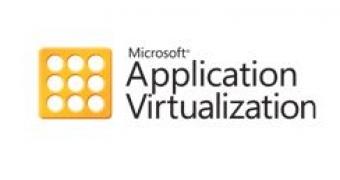Application Virtualization (App-V) 4.6 is one of the key components of the Microsoft Desktop Optimization Pack 2010, a release which is tailored specifically to Windows 7, Windows Server 2008 R2 and Office 2010. Microsoft Software Assurance customers can access App-V 4.6 immediately via MDOP 2010. In addition, the Redmond company has made available the solution accelerator to MDOP customers via MDOP 2010 which is available for download via the Microsoft Volume Licensing Site (MVLS). In addition, customers that only want to evaluate MDOP 2010, can grab the bits from MSDN and TechNet.
“App-V will help save money immediately by freeing up administration time from IT and enhance end-user productivity. It is an out-of-the-box platform to enable you to migrate your applications and deploy Windows 7 faster and easier. We offer much tighter integration with more products (Office 2010, SCCM, 3rd Party Distribution Systems) and we support both Windows 32/64-bit applications and x86/x64 platforms on desktops as well as Terminal Servers. App-V client deployment is easy and plugs into your existing deployment workflows,” revealed Karri Alexion-Tiernan, director of Product Management for App-V.
App-V is essentially a solution which delivers support for application streaming. IT admins are able to streamline the process of delivering applications to new desktops. In this regard, employees can have the same Windows experience independent of their actual location or the machine they use, an aspect which can only impact workflow and productivity positively. Of course, in order for this to happen, corporate customers need to be running not only App-v 4.6 but also Windows Server 2008 R2.
“App-V 4.6 is now compatible with 64-bit Windows client and server platforms, enabling IT to take advantage of x64 for client hardware refresh AND also deploy App-V to Windows Server 2008 R2 Terminal Services. The benefits: consolidate terminal server farms, simplify profile management and provide virtual applications via session virtualization for users using App-V with Remote Desktop Web Access and Connections, and Access Gateway,” Alexion-Tiernan added.
With the advent of App-V 4.6, Microsoft delivers full integration with Windows 7 and Windows Server 2008 R2. It is critical to note that the integration only starts at the user interface level, but goes much deeper under the hood. Applications virtualized with App-V 4.6 can be pinned on the Windows 7 Taskbar, and leverage the JumpList feature. But at the same time, the latest version of Microsoft Application Virtualization comes with support for the BranchCache feature in Windows 7 and Windows Server 2008 R2, which offers branch offices the possibility to simplify access to corporate resource, and to cut down on bandwidth consumption, but caching files, documents, media, etc. locally.
“Some key benefits [of App-v 4.6] include:
•User settings roam with them, no matter which PC they login from. •Applications are pulled by the user. Only 20-40% of the application to get up and running, as opposed waiting for the full installation to complete. •No more reboots during application deployment, upgrades and other maintenance tasks associated with native applications means more user productivity time. •Fewer machines required supporting down-level application versions, for example Word 2003, Word 2007 and Word 2010 can co-exist on the same machine. •Applications are available to the user while connected and when offline. •Fewer helpdesk calls and shorter wait times for support,” Alexion-Tiernan explained.

 14 DAY TRIAL //
14 DAY TRIAL //